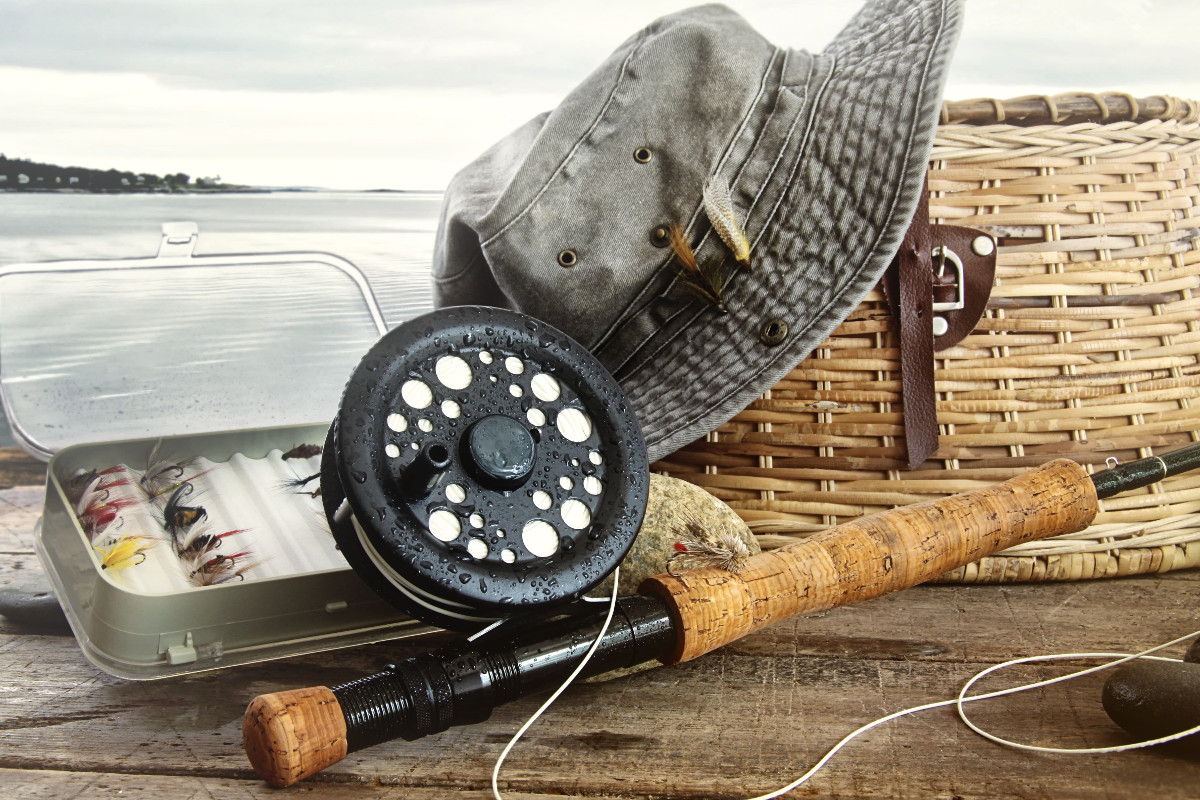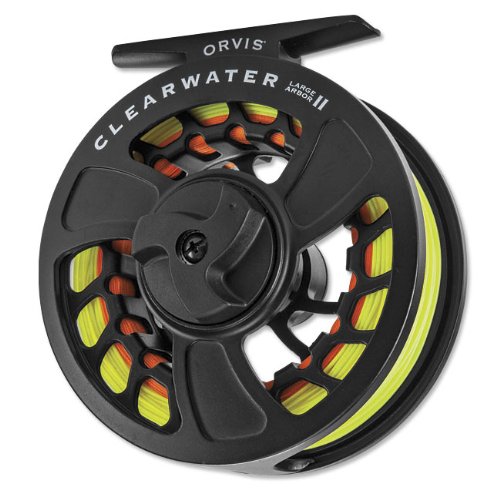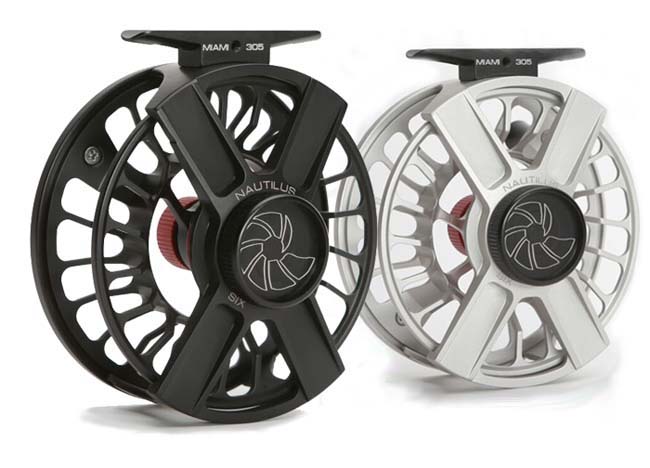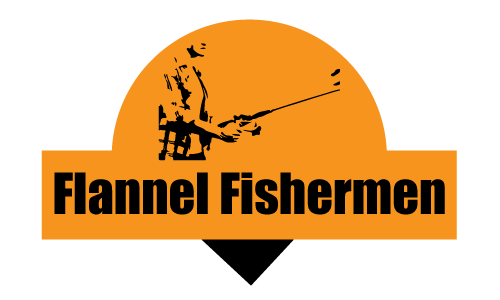Best Fly Fishing Reels Buyer’s Guide & Review

Choosing the best fly fishing reel to match your new fly fishing rod is very important. There are so many options out there to choose from that often times it is difficult to compare “apples to apples,” as they might say. However, a great point of reference is cost, so in this article we are going to review my top picks for best budget fly fishing reel, best mid-range fly fishing reel, and best high end fly fishing reel.
You might have already checked out my top picks for fly fishing rods, but if you have not let’s discuss the criteria for my choices. First of all, most fly fisherman are looking for a solid, all-round reel to use in a variety of situations. This narrows the choices down to the reels in the 5/6 weight category, which will pair nicely with the choices for the best fly rod.
If fishing is like religion, then fly fishing is high church.
Tom Brokaw
Reviews of the Best Fly Fishing Reels
To get straight to the point, we’ll use this section to show you our picks for the top fly fishing reels available at different price points. Below these reviews, I’ll provide some of my personal insight to fly fishing reels, as well as share some experiences I’ve had casting for trout, in hopes it can come in handy for you as well, so check that out if you can!
- Basic
- Mid-Range
- High-End
Orvis Clearwater Large Arbor

Pros
- Great value! It will be hard to find a comparable reel for the same price.
- Nice appearance.
- Easy to adjust drag.
- Easily converted to either left- or right-hand retrieve.
- Very well-liked in other independent reviews.
Cons
- Orvis does not sell extra spools at the lower cost (see information about spools below these reviews).
- Only comes in two sizes (4-6 and 7-9).
General Consensus
Coming from a company like Orvis we would expect this reel to be placed in the high-end category, but Orvis also makes some incredible basic reels. The Clearwater series will outperform any and all of the competitors in the basic reel category!
This is a great entry level reel that will not let you down on your next fishing expedition. An important note is that Orvis pairs the Orvis Clearwater fly fishing reel with one of their award-winning fly fishing rods, throws in high quality line and a tube, all for less than the cost of a mid-range fly fishing reel!
The Nautilus X Fly Fishing Reel (XM 4/5)

Pros
- Machined in Miami, Florida, from the highest grade aircraft aluminum available.
- Excellent counterbalance.
- Wide range of drag options (max 7lbs.).
- Easy to grab handle shape.
Cons
- “Plastic-y” sound while reeling in line.
- Availability might be limited at times.
General Consensus
The Nautilus X has been consistently winning competitions across the fly fishing world for years. This fly fishing reel falls into the mid-range category in only one of its specs; price! In every other specification a sportsman looks for when shopping around for a best fly fishing reel, the Nautilus X will meet or beat far more expensive reels.
The Nautilus X series as a whole performs incredibly well. Whether you are in the market for a 4/5-weight to bag those hefty Rainbows on your next river trip, or you want a beefy 8-weight to skim across the waters of the Intracostal Waterways in search of larger gamefish, this is a company that will not disappoint. The fact that these are proudly manufactured in the US from the highest quality components available is just the icing on the cake!
Galvan Torque 5 Fly Fishing Reel

Pros
- Polymer/RULON bushings that never need lubrication or maintenance.
- Drag system has one of the widest ranges in the industry; there is a setting to please even the most picky fisherman.
- Max drag is 15lbs+.
- Consistently outperforms far more expensive reels.
- Utilitarian appearance with high-quality function.
Cons
- Handle is somewhat short for some larger handed sportsmen.
- Drag knob could potentially get knocked off at lowest setting.
General Consensus
When you are looking for the perfect high-end reel to pair with your award-winning fly fishing rod, look no further than the simple, smooth Galvan Torque 5. The undisputed winner of the prestigious 2016 Yellowstone Angler 5-weight Shootout, this reel outperforms models nearly double in price!
In this category (best high-end fly fishing reel) there are many options for $600 and even $700 that do not provide the performance and quality that the Galvan Torque 5 provides. However, this category is not just about providing the most expensive option, but the option that excels in all specs and distinguishes itself as the industry’s best. We are lucky the folks at Galvan choose to sell their product at a comparable price!
Insider Tip: For all you salties looking for a higher weight reel; the Galvan Torque also comes in 8-weight that is just as highly reviewed as their 5-weight.
Why Choose a Great Fly Fishing Reel?
The fly fishing reel can be under-appreciated in the realm of fly fishing. With so much focus on which tackle to cast and what rod to use the choice of reel can be thought of as a secondary concern. This is very risky; when planning an expedition to your favorite river a gear failure can mean lost hours or even lost days of prime fishing time. Most of us do not fish for a living and the time we set aside for this amazing activity is highly valued and not easily given away. To lose time due to something as small as a broken base is not a situation you want to encounter during your next fishing expedition!
I was hiking along the John Muir Trail with my fly fishing kit strapped to my backpack and to save weight I had left the sock and tube out of my inventory. My plan was to be able to pull my rod and reel quickly when I spotted a promising stream bend or lake shore. For several days this worked fabulously, until I became careless and snapped the reel off while laying my pack down, eyes only focused on the trout breaching in the dusky twilight stream ahead. User error was to blame in this instance, but with a sturdier die-cast reel I could have kept fishing during my hike.
What Makes a Good Fly Fishing Reel?
There are a variety of criteria an informed sportsman needs to consider when choosing a best fly fishing reel. The design, weight, materials used in construction, handedness, spool design, drag, and retrieval system all come into play when making your decision. Let’s go through each of these criteria (used in our rankings) so you know what to look for when choosing your next reel!
Fly Fishing Reel Design
There are three standard designs used in modern fly fishing reels; standard arbor, mid arbor, and large arbor.
Standard Arbor fly fishing reels are the best choice for beginners and most river fishing situations. The base is situated in the exact middle of the spool so it is simple to attach this to the reel seat.
Mid Arbor fly fishing reels located the base somewhat apart from the center of the spool, allowing for larger spools which in turn hold more line. Because the larger spool retrieves more line with each turn and is designed to have a faster retrieval rate, this is the reel to choose when in long-cast situations.
Large Arbor fly fishing reels are primarily used in salt water. They will be machined from aluminum to resist corrosion and allow for a fast retrieval rate, enabling you to land that prize salt water fish!
Fly Fishing Reel Weight
This category might seem somewhat misleading; this does not refer to the weight of the actual reel but rather the weight of the line the reel is meant to handle. Some reels can actually handle multiple weights, for example 5/6 weight fly fishing reels or 7/8 weight fly fishing reels. A 5-weight reel is paired with a 5-weight rod (pretty self-explanatory, eh?) and this is to ensure your system is matched for the line you are casting.
Fly Fishing Reel Material
Most modern fly fishing reels are manufactured from die-cast materials or CNC-machined aluminum. The high-end models using CNC machined aluminum will be more durable. CNC-machined aluminum is also recommended for salt water fishing to avoid corrosion.
Fly Fishing Reel Spool Design
Your grandfather’s fly reel might have used a wooden spool, but these days are long since passed! Modern fly fishing reels use molded plastic reels that can accommodate a variety of lines. These can be switched out quickly for line changes during your fishing trip.
Fly Fishing Reel Handedness
This is exactly as it sounds; which hand do you prefer to reel in your line with? While many modern fly fishing reels are ambidextrous, be sure you double check the specific reel before you buy to make sure you will be comfortable with the design.
Fly Fishing Reel Drag
This simply refers to the mechanism your new fly fishing reel will use to apply friction to increase the force needed to remove line from your reel. Imagine you are just beginning to feed line into your cast. If the reel spins uncontrollably, there will be a snarl or tangle, and the cast is finished before it has begun!
Two types of drag systems are used in modern fly fishing reels. The first (“spring and pawl”) utilizes a system of internal gears to control the flow of line. Some of the higher end models use a closed system, protecting these gears with seals and o-rings so as not to allow water to enter. This system is normally recommended for fresh water and trout fishing.
The second type of drag system used in modern fly fishing reels is a disc brake assembly. These place tension on the line by use of a brake and are more resistant to salt water and harsh conditions.
Fly Fishing Reel Retrieval Systems
There are three types of retrieval systems used in modern fly fishing reels. Automatic retrieval is great for fishing in salt water, when you need to pull in a large amount of line quickly. Multiple action retrieval systems allow you to reel the line in at a faster rate but may create difficulties when retrieving smaller fish in creek or stream environments. Single action fly fishing reels are the easiest to use and are relatively straight-forward; these reels are generally the best option for the beginner fly fisherman.
I have mainly used single action on my fishing trips, due to the fact that most of my locations are heavily guarded by brush and restrictions. Many times I am dealing in short, difficult distances or less than optimal conditions.
I was hiking into the Sierras via Kennedy Meadows on my first stab at some high altitude trout fishing and the trails were tough, the overhanging brush tougher, but the fish had scarcely seen a fly presented and so I was bringing in a fish with each successful cast. The problem was I have very few successful casts!
I was working on a restricted arc, on the horizontal, and did not have many options of where I could actually reach where the fish were with proper presentation. After I bagged one trout the section of river would cool off and I would generally move on to the next likely area rather than wait. While climbing up and over a high pass I had packed a ziplock with snow and so there in the middle of the mountains I showed up in camp that night with a bag of iced trout, fresh from the stream that day!
What to Look in a Best Fly Fishing Reels
Given fly reels are contsructed quite differently from other common reel types, such as spinning reels, it is important to be aware of some of the subtle differences. If you’re solely a fly fisherman, then chances are you already have lots of knowledge in this area, but for those with minimal experience casting flies, we will provide some further information about important things to consider when looking for a new fly fishing reel.
Weight
Fly reels come in many different sizes, or “weights”, that allow you to optimize the amount of backing and line on your current rod. Common fly reel weights are usually around 3-10, but you will often see a small range reported instead, such as “3/4” or “5/6”.
Given most fly reels will come in a variety of weights, how do you know which is the correct weight for you? This will depend mostly on the rod weight that you are currently using, and it’s quite simple to match up. For example, if you are using a 7-weight rod, then a 7/8 fly reel should do the trick nicely.
Drag
Aside from the general action of casting and retrieving, the drag system is the main mechanical component of a fly reel. This allows you to alter the resistance on the reel when you are fighting a fish. Given this is an extremely important function of any reel, as well as an important aspect of fishing in general, most fly reels will have a decent drag system in place.
However, if you want to ensure that you are getting what you want, it helps to know a little bit about how the drag system works. Most fly reels will employ a disc system, whereby numerous lubricated discs are stacked, and by tightening or loosening a knob you can change how firmly these discs are pressing together, ultimately adding or decreasing resistance on your reel.
While we mentioned the drag system is an integral component of any reel, many fly fishermen find they don’t have to worry about subtle differences between drag systems when fishing for trout, as standard drag system seem to work more than good enough for trout. Where it really matters is in saltwater where you have a chance at setting the hook on a much larger or stronger fish that will fight your line for a prolonged period of time.
Lastly, specific drag systems on particular fly reels are best understood after extended use. Of course, this doesn’t help much when you’re shopping for a new fly reel, and “fast-acting disc drag system” doesn’t always give you a good idea if one drag system is better than another. Therefore, we would simply recommend looking around at numerous customer reviews (not just our reviews), to see what various individuals say about the drag system. If the reviews are all over the place, stick with an angler who seems to be fishing for a similar species as you, and who may have the same level, if not more, experience.
Arbor
This is a term you may see a lot when looking at different fly reels. So what is an arbor and why is it important?
The arbor is the part of the reel that the fly line and backing winds around. The main thing to recognize here is that you can get many different sizes of arbors, usually categorized as small/standard, mid-arbor, and large arbor fly reels.
In order to understand how the size affects the performance, it’s best to compare the two extremes: small and large. A small arbor will be able to hold the most amount of backing and line, but the trade-off is a slower retrieval rate and more line memory.
Looking at the retrieval rate, an arbor with a smaller diameter will require more revolutions to retrieve the same amount of line when compared with a larger arbor. In terms of line memory, we are basically referring to susceptibility of the line to coiling, and ultimately, tangles or birds nests. With a small arbor, the line is more tightly coiled, and therefore it is more likely to have a residual coil/bend as it comes off the reel. Since the line on a large arbor is less tightly coiled, there is a lower chance of tangles or birds nests.
So why not always use a large arbor? Large arbors tend to be found on more expensive reels, so that’s a practical factor to consider. Additionally, if you’re fishing smaller freshwater fish like trout, often times a large arbor reel will cause a noticeable imbalance on the lighter rod. Combined with the fact that large arbors are often found on larger reels in general, these reels will often be a bit heavier than a small-arbor reel.
Generally speaking, if you’re planning on fishing larger saltwater species that put up a strong fight, then you will likely want to use a large arbor reel due to the retrieval speed and robust construction, as well as the fact that it’s weight will pair well with your rod. If you’re fishing smaller freshwater fish like trout, you can still use a large arbor reel, but you may prefer something more lightweight and balanced on your rod. A mid-arbor reel will pretty much provide an average of the two, so if you’re really not sure that can also be a good place to start.
Summary
I hope you found this information helpful in one way or another! I always find hearing others’ experiences, especially when it comes to success or problems with fly fishing gear and various strategies, to be really helpful down the road. At the end of the day, the main thing is you get out there and enjoy your experience. Happy fishing!
